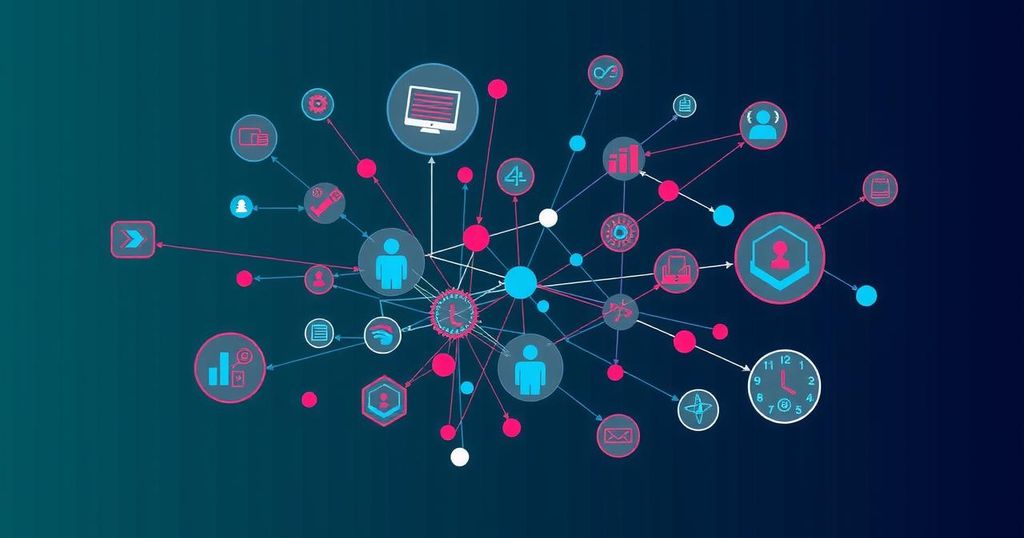Slack CEO Discusses Strategic Internal AI Rollout At MIT EmTech Conference
Slack’s CEO Denise Dresser highlighted the need for careful integration of AI within the company, revealing employee skepticism through a survey. With plans to roll out AI agents to boost organizational productivity, Dresser categorized employees into five archetypes to better address concerns and encourage adoption. Key strategies include defining clear use cases, targeting low-hanging tasks for AI, and enhancing information retrieval to maximize efficiency. Slack aims for a collaborative transition to AI, merging technology with a human-centric approach.
In anticipation of integrating AI-driven task agents to enhance operational efficiency, Slack recently analyzed employee attitudes toward artificial intelligence through a global survey. Amid a landscape where only a third of respondents had experimented with AI tools, and a staggering 93% found AI outputs unreliable for professional tasks, Slack’s leadership faced a compelling challenge: bridging the gap between skepticism and AI’s transformative potential. Through discussions held at the MIT EmTech conference, CEO Denise Dresser articulated Slack’s vision to evolve into an “AI-powered work operating system.” She emphasized the platform’s core functionality as a repository of long-term communication, highlighting its efficacy in memory retention since its inception in 2014.
As part of its AI rollout, Slack introduced three internal agents — a sales representative, a sales coach, and a service assistant — while customers have already created around 10,000 agents. To address the apprehensions revealed in their survey, the company categorized its workforce into five archetypes based on their interaction with AI: Maximalists, Undergrounds, Rebels, Superfans, and Observers. Each group presents unique challenges and opportunities for engagement. Dresser articulated the need for leaders to identify where each employee stands regarding AI adoption, focusing efforts on bridging the divide for those hesitant.
Dresser shared her insights for a successful AI implementation: First, it’s crucial for leaders to determine specific problems that AI could address; deploying technology without a clear rationale can lead to ineffective outcomes. Second, identifying accessible, repetitive tasks that AI can manage — the “low-hanging fruit” — allows companies to harness AI to free up employees for more meaningful engagement and creativity. Dresser noted that while agents can handle basic queries, human oversight is indispensable for complex decisions.
Lastly, she emphasized tackling significant pain points, such as information retrieval, which remains a time sink for many organizations. By employing AI for dynamic search functions and summarizing vast message threads, Slack is transforming daily workflows. Since the launch of Slack AI, it has successfully distilled 600 million messages, yielding a staggering one million hours saved in collective reading time. Dresser encouraged a mindset of seamless integration, highlighting that applying AI where it fits naturally within workflows can ensure tangible productivity benefits and ultimately enhance collaboration.
The article explores Slack’s strategic approach to incorporating artificial intelligence into its operations. It highlights a survey conducted by the company, which revealed employee skepticism towards AI, highlighting the importance of addressing these concerns as they transition to an AI-integrated platform. Slack’s focus is on rolling out AI agents that enhance productivity while maintaining human oversight, leaning on insights shared by CEO Denise Dresser at the MIT EmTech conference.
Slack’s methodical approach to internal AI rollout showcases the balance between innovation and employee sentiment. By categorizing user attitudes and focusing on targeted use cases of AI, Slack aims to demystify technological integration. The emphasis on real-time applications — such as enhancing search functionalities and addressing information retrieval obstacles — underscores a commitment to fostering a more effective and collaborative workforce through AI. Ultimately, by engaging deeply with employee concerns, Slack paves the way for a smoother transition into AI-powered practices that elevate productivity while acknowledging the essential human touch.
Original Source: mitsloan.mit.edu




Post Comment